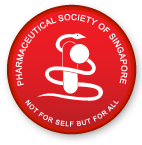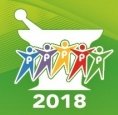Among the more than 80 programs presented were several sessions that dealt with reducing medication errors and adverse events, a topic that has received widespread media attention. Conference participants learned about common medication errors, steps to avoid or eliminate them, strategies to communicate effectively with prescribers, and ways to recognize and reduce stressful situations in the pharmacy workplace that may contribute to medication errors.
Top 10 medications involved in drug errors in US hospitals as tracked by USP, which maintains a database of medication errors that are reported anonymously were:
1) Insulin (4% of all medication errors in 2005);
2) Morphine (2.3%);
3) Potassium chloride (2.2%);
4) Albuterol (1.8%);
5) Heparin (1.7%);
6) Vancomycin (1.6%);
7) Cefazolin (1.6%);
8) Acetaminophen (1.6%);
9) Warfarin (1.4%); and
10) Furosemide (1.4%).
Most healthcare professionals have learned the "5 rights" of safe medication use: the right patient, the right drug, the right time, the right dose, and the right route of administration.
Experts at ISMP have identified 10 key "system" elements that most influence medication use, reported Donna Horn, RPh, DPh, ISMP Director, Patient Safety - Community Pharmacy. Systems factors play a major role in increasing the likelihood that an individual will make an error. Deficiencies in any of these system elements can lead to medication errors[9]:
• Patient information (age, weight, allergies, diagnoses, and pregnancy status);
• Drug information (up-to-date information readily available);
• Communication (collaborative teamwork between all healthcare members and the patient);
• Drug labeling, packaging, and nomenclature (limit look-alike and sound-alike drug names, confusing packaging);
• Drug standardization, storage, and distribution (restricting access to high-alert drugs);
• Medication delivery device acquisition, use, and monitoring;
• Environmental factors (poor lighting, cluttered work spaces, noise, interruptions, nonstop activity, and deficient staffing);
• Staff competency and education;
• Patient education; and
• Quality processes and risk management (systems are needed for identifying, reporting, analyzing, and reducing the risk for medication errors with a nonpunitive culture of safety).
When an error occurs, it is tempting to blame individuals, Horn said. A "systems approach," however, looks at the whole system rather than individual errors. For instance, failures in the design or implementation of systems can lead to excessive reliance on memory, lack of standardization, inadequate access to information, and poor work schedules. Thus, with a systems approach, accountability is expanded to include anyone who had any influence over the error, setting the stage for broader solutions.
How Can We Prevent Medication Errors?
Nearly half of all adverse drug events have some form of "preventability," and many do not represent errors of commission but, rather, errors of omission. This implies a failure on the part of someone (pharmacist, physician, patient, or the interactions between these groups) to detect certain factors that most likely led to the adverse event. Therefore, fixing the errors often require not just intra-department solution, but also integrated cross-functional approach.
Pharmacy work is highly stressful, and pharmacists who are under extreme stress are at risk for more errors. Pharmacists need to identify their own personal stress triggers and anticipate their responses to stress.
**********


